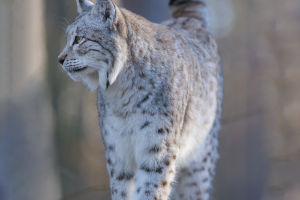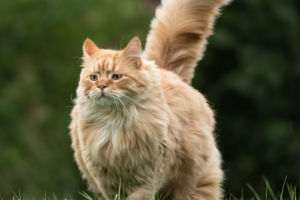Free feeding and regular feeding are two common methods of feeding cats.
Free feeding involves leaving food out for the cat to eat at any time, while regular feeding involves specific meal times with measured portions.
Both methods have their advantages and disadvantages.
Free feeding allows cats to eat whenever they are hungry, which can be convenient for busy owners. It can also be helpful for cats who have trouble maintaining weight or need to gain weight.
However, free-feeding can lead to overeating and obesity, which can lead to health problems such as diabetes, arthritis, and heart disease.
Free feeding also makes it difficult to monitor a cat's appetite and food intake, which can make it harder to detect health issues that affect appetite.
For multi-cat households, if cats eat freely, it is impossible to keep track of each cat's food intake.
If an individual cat refuses to eat because it has lost its appetite due to illness, the owner cannot detect it in time and it is difficult to control the cat's health.
And, if you have more than one cat in the house, completely letting free-range eating go may allow the more dominant cats to eat more, while the cats in a disadvantaged position in the house eat less or even less.
Finally, free feeding leaves cat food in the air for a long time, which can easily deteriorate and not be fresh and can affect the taste or even cause illness in cats with weak stomachs.
Regular feeding involves feeding cats at specific times with measured portions. This method allows owners to monitor a cat's food intake and adjust portions as needed to maintain a healthy weight.
Cats have a short intestinal tract, small stomach capacity, and fast digestion. Regular and quantitative feeding can greatly reduce the intestinal pressure of cats.
This allows the cat's digestive system to rest, avoiding gastrointestinal discomfort and facilitating the formation of a proper gastrointestinal digestive routine.
However, regular feeding may not be as convenient as free-feeding, especially for owners with busy schedules. Cats who are used to free-feeding may also have trouble adjusting to a regular feeding schedule.
If your cat has an obesity problem and you want to try regular feedings but don't have the time, then you can try buying an automatic pet feeder.
An automatic cat feeder is a device designed to dispense a predetermined amount of food to cats at fixed intervals or on demand. It provides convenience for pet owners and helps to regulate feeding habits and portion control for cats.
Likewise, automatic water dispensers and automatic litter boxes are great for busy owners.
In short, the focus is on establishing good feeding habits, which is important, especially for obese cats.
Every owner should try to avoid a series of illnesses caused by obesity in cats so that our lovely babies can grow up healthy.


